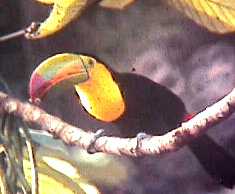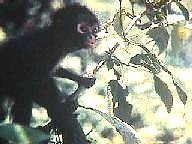| The case of
Los Tuxtlas, Veracruz, Mexico Los Tuxtlas harbors the
northernmost representation of the Amazon rain forest in
the American continent. The forests present in the region
are particularly rich in plant and animal species. For
example, biologists have documented the presence of about
550 species of birds, 110 species of mammals, 150 species
of reptiles and about 60 species of amphibians at Los
Tuxtlas.
The components of
the avian and mammalian communities are relatively
numerous, they have diurnal and nocturnal
representatives, they ocuppy a great variety of trophic
levels, they are sensitive to habitat degradation caused
by man, and they are relatively easy to observe and
study. These aspects make these two animal communities
adequate biological material to investigate the
impact of habitat loss, fragmentation and isolation on the conservation of
biodiversity in the tropics.
The severe transformation of
the tropical rain forest landscape of Los Tuxtlas by man
and the high biological richness documented for this
region, have served as a model to describe and understand
the effects of fragmentation and isolation of the
tropical rain forest on the avian and mammalian
communities.
|


The region of Los Tuxtlas
by the Gulf of Mexico has undegone a severe
transformation by man in the last 50 years. About 80-85%
of the original (2,500 km square) tropical rain forest
has disappeared. Black areas represent remaining tropical
rain forest, white areas indicate pastures.
|




